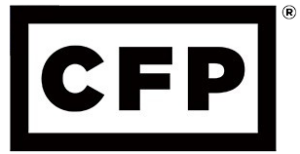The SECURE Act was signed into law on December 20, 2019. Many changes were made that will materially impact retirees, 401(k) plans, and families. So instead of diving into everything all at once, today I’m focusing on how this piece of legislation affects children.
Penalty-Free Withdrawals for Birth or Adoption of Child
Congratulations if you have a new baby on the way or are about to adopt a child! Right after you pass out the cigars, you’ll probably start worrying about how you’re going to pay for the birthing or adoption costs. If you have a 401(k), IRA or other retirement account, the new retirement law lets you take out up to $5,000 following the birth or adoption of a child without paying the usual 10% early-withdrawal penalty. (You’ll still owe income tax on the distribution, though, unless you repay the funds.) If you’re married, each spouse can withdraw $5,000 from his or her own account, penalty-free. Although using retirement funds for child birth or adoption expenses obviously reduces the amount of money available in retirement, lawmakers hope this new option will encourage younger workers to start funding 401(k)s and IRAs earlier.
You have one year from the date your child is born or the adoption is finalized to withdraw the funds from your retirement account without paying the 10% penalty. You can also put the money back into your retirement account at a later date. Recontributed amounts are treated as a rollover and not included in taxable income.
If you’re adopting, penalty-free withdrawals are generally allowed if the adoptee is younger than 18 years old or is physically or mentally incapable of self-support. However, the penalty will still apply if you’re adopting your spouse’s child.
Grad Students and Care Providers Can Save More
Contributions to a retirement account generally can’t exceed the amount of your compensation. So if you receive no compensation, you generally can’t make retirement fund contributions. Under current law, graduate and post-doctoral students often receive stipends or similar payments that aren’t treated as compensation and, therefore, can’t provide the basis for a retirement plan contribution. Similar rules and results apply to “difficulty of care” payments that foster-care providers receive through state programs to care for disabled people in the caregiver’s home.
Under the SECURE Act, amounts paid to aid the pursuit of graduate or post-doctoral study or research (such as a fellowship, stipend or similar amount) are treated as compensation for purposes of making IRA contributions. This will allow affected students to begin saving for retirement sooner. Similarly, “difficulty of care” payments to foster-care providers are also considered compensation under the new retirement law when it comes to 401(k) and IRA contribution requirements.
Using 529s to Pay down Student Loans
A change creating some major buzz is that 529 plan account owners may now withdraw up to $10,000 tax and penalty-free for payments toward qualified education loans. This is a LIFETIME limit, not annual. The good news is the $10,000 can be applied per student, which makes this benefit more significant for households with multiple children. However, there is no double-dipping when it comes to federal education tax benefits. Student loan interest paid with tax-free 529 plan earnings can not be used toward a student loan interest deduction.
Prior to the SECURE Act passing, 529s were recently expanded to allow $10,000 withdrawals to pay for K-12 education costs. A small change within the SECURE Act now allows that amount to be also used for apprenticeships.
This piece was adapted from FMEX Direct with permission.





This Post Has 6 Comments
Pingback: How the S&P500 fairs in Election Years - North Andover Financial Planner | Powwow, LLC
Pingback: How the S&P500 fairs after an Election Year - North Andover Financial Planner | Powwow, LLC
Pingback: What you need to know about Securing a Strong Retirement Act of 2021 - North Andover Financial Planner | Powwow, LLC
Pingback: All you need to know about 2023 Tax-Related Adjustments to Premiums, COLAs, Brackets and Thresholds - North Andover Financial Planner | Powwow, LLC
Pingback: All you need to know about 2025 Tax-Related Adjustments to Premiums, COLAs, Brackets and Thresholds - Powwow, LLC
Pingback: All you need to know about 2025 Tax Adjustments to Premiums, COLAs, Brackets and Thresholds - Powwow, LLC